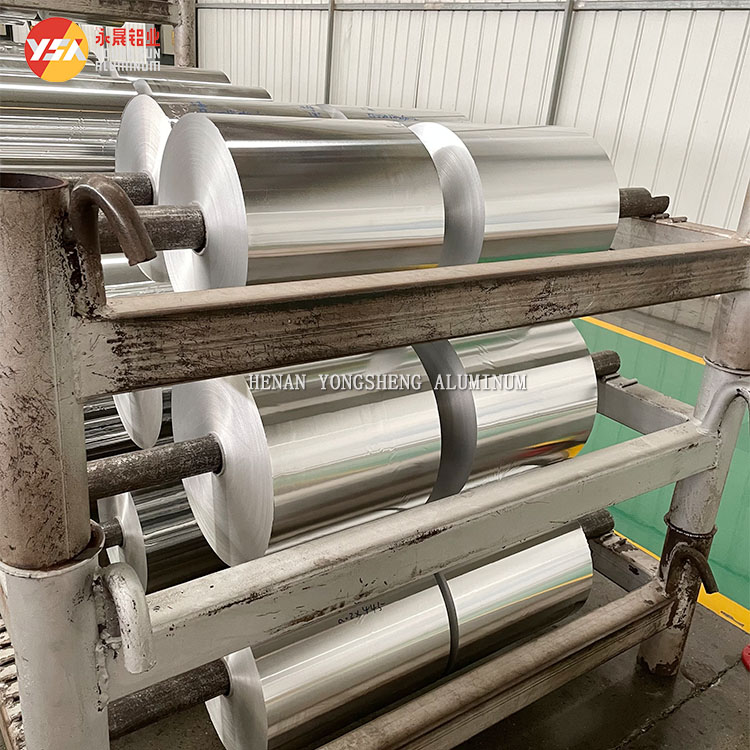Cigarette foil, commonly known as cigarette packaging foil, is a type of aluminum foil used for wrapping cigarettes. Its primary function is to protect cigarettes from moisture, light, and odors, thereby preserving their flavor and freshness. The production process of cigarette foil is intricate, involving multiple steps to ensure it possesses excellent mechanical and protective properties. Here is a detailed overview of the cigarette foil production process.
Selection of Raw Materials
The main raw material for making cigarette foil is aluminum ingots. The purity and quality of aluminum ingots directly affect the performance and appearance of the cigarette foil. Typically, high-purity aluminum ingots are chosen to ensure the final foil has good ductility and a smooth surface.

Casting and Rolling
After being heated and melted, the aluminum ingots are processed into cast rolls through the casting and rolling process. The thickness of the cast rolls is generally between 4-6 millimeters, serving as the raw material for subsequent cold rolling processes.
Cold Rolling
The cast rolls undergo multiple cold rolling processes to gradually become thinner. Each cold rolling step requires precise control of temperature and pressure to ensure the foil’s uniform thickness and smooth surface. The cold-rolled foil usually reaches a thickness of 0.006-0.007 millimeters.
Intermediate Annealing
The cold-rolled foil needs intermediate annealing treatment. The annealing process involves heating and slowly cooling the foil to restore its ductility and softness. This step helps eliminate the internal stress produced during cold rolling, improving the aluminum foil’s workability.
Finishing Rolling
After annealing, the aluminum foil undergoes a finishing rolling process to further reduce its thickness and improve surface quality. During finishing rolling, it is essential to finely control the rolling speed, pressure, and lubricants to ensure the final foil’s uniform thickness and defect-free surface.
Tratamento de superfície
The finished rolled aluminum foil requires surface treatment to enhance its protective properties and aesthetics. Common surface treatment methods include coating, laminating, and embossing. Coating involves applying a protective film on the aluminum foil surface to enhance its moisture and corrosion resistance. Laminating involves bonding a layer of paper or plastic to the aluminum foil surface, further enhancing its strength and protective properties. Embossing involves pressing specific patterns onto the aluminum foil surface to improve its aesthetics and friction coefficient.
Slitting and Rewinding
After surface treatment, the aluminum foil undergoes slitting and rewinding processes. According to customer requirements, the aluminum foil is slit into rolls of different widths and lengths and neatly rewound. During slitting, the edges need to be smooth and free of burrs to prevent tearing or damage during use.
Quality Inspection and Packaging
After all processes are completed, the cigarette foil undergoes stringent quality inspections. Quality inspection items include thickness measurement, surface smoothness check, and mechanical performance testing. Qualified cigarette foil is then packaged, usually using moisture-proof packaging materials to ensure it is not affected by the environment during transportation and storage.

Conclusão
The production process of cigarette foil is complex and precise. From the selection of raw materials to the final product, it involves multiple processes with strict control. Each stage directly affects the final quality of the cigarette foil. Through advanced processes and rigorous quality inspections, high-quality cigarette foil can be produced to provide excellent protection and packaging for cigarettes.


